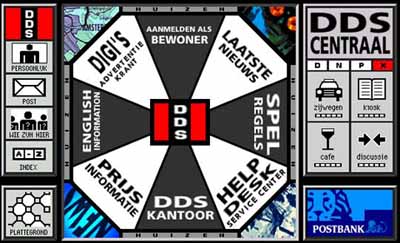- Social Networking Services – Part I: A Brief History
- Social Networking Services – Part II: Usage
From the Oscar-winning movie “The Social Network” to the recent introduction of Google Plus, no-one can deny it: on-line social networking services are here to stay. But, where did they come from and what does it mean for you and me?
All modern social networking services have the same basic structure: you create a profile with some information about yourself, add your friends as connections, and start sharing self-created content: short messages, photos, videos, websites, etcetera. It’s like having a broadcast channel with a guaranteed audience: the people you know. Why is this basic model so successful? My guess: it caters to the human desire to share.
History

The social potential of the Internet was obvious even back in 1995 when I first got Internet access. Back then there was a community in the Netherlands called “De Digitale Stad” (The Digital City). This is where I also hosted my first homepage, and yes: it did have tacky animated GIFs. Although, the digital city was not exactly comparable to the services available today, it did have the same community feel to it: publishing your own things on-line, and finding other as well as interacting with them.
Rise of Social Networks

While Sixdegrees.com pioneered some of what we view as a social networking service today, it were probably Friendster, MySpace and LinkedIn that gained widespread global popularity initially. In the Netherlands most people’s first experience was probably Hyves. The layout of Hyves was often criticised for allowing too much freedom leading to unreadable pages with `happy’ color schemes. However, Hyves offered what many people wanted: a quick way to create a homepage, and is still popular to this day. On the other side of the ocean it was Facebook that quietly took the lead from MySpace in 2008. While MySpace was launched before Facebook, and was for some time very popular among artists for showcasing music, it lost the lead firstly because its creators failed to rapidly innovate, and secondly because it was slower: Facebook invested a lot in making their service load and respond quickly which is a key factor in getting users and keeping them. StudiVZ successfully copycat Facebook and gained widespread popularity in Germany. Finally, there’s of course Twitter founded in 2006 which differentiated by heavily focusing on short real-time public messages.
Recent History
Search-giant Google has had some trouble coming up with its own answer to the social networking explosion. Initially they launched Orkut around the same time as Facebook. Even though Orkut was successful in India and Brazil, it never caught on globally. They tried to take on Twitter with Buzz, and Google Wave was intended to be a completely new collaboration experience, but was discontinued. Recently the company launched Google Plus which is receiving mixed to positive reactions. However, given its rapid adoption my guess is that it will be successful and provide some serious competition for Facebook: the current global market leader. Nevertheless, it’s probably obvious to you by now: these services tend to come and go. We don’t know what will be the Facebook or Twitter of tomorrow, and it may very well be a service that no one has heard of yet.
Curious on how you can leverage social networking services? Read the second part of this article.

